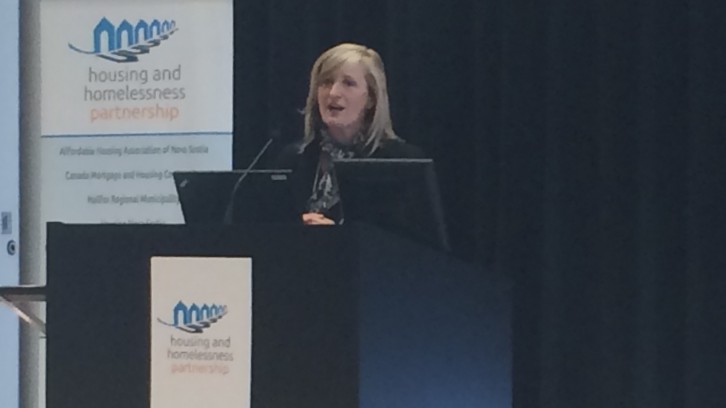Housing
Halifax affordable housing shortages leave almost 300 people homeless on typical night
A new study shows a lack of affordable housing is leaving people to live on the streets

caption
Claudia Jahn discusses the issues of homelessness in HRM
caption
Claudia Jahn discusses the issues of homelessness in HRM.Affordable housing means spending less than one third of household income on housing expenses. But a study released by the Housing and Homelessness Partnership on Monday shows more than one in four people are spending more than this.
The partnership is a coalition of organizations working together toward decreasing housing poverty and ending homelessness in the Halifax region. They met Monday and Tuesday this week to discuss solutions to this growing problem.
Kasia Tota, a community planner with the Halifax Regional Municipality (HRM), says this is the result of a housing supply gap.
“As the average rental and homeownership prices see steady growth in the region, there has become a shortage of non-market housing to fulfill the demand,” she said.
Non-market housing includes emergency shelters, transitional/supported housing and subsidized housing.
The supply of housing in HRM is made up of ownership housing (62 per cent), rental housing (34 per cent) and non-market housing (four per cent).
However, 20 per cent of households fall within the income bracket requiring the assistance of non-market housing services.
Housing shortages lead to homelessness
To determine how many people were left homeless as a result of these housing shortages, Claudia Jahn with the Affordable Housing Association of Nova Scotia and independent researcher Charlene Gagnon conducted a point-in-time count.
A point-in-time count identifies how many people are homeless at a certain point in time.
The study was conducted with the help of numerous volunteers who took one night to walk around the HRM and ask every person they encountered whether they had a home to go to for the night.
The study also included a survey done of soup kitchens, shelters, hospitals and detox centres to gather an approximate number of how many people in HRM were homeless.
When the night the count was done, 284 people were counted as homeless.
Searching for solutions
Jahn said the first point-in-time count will serve as a baseline for future initiatives. She said the Housing and Homelessness Partnership will collaborate with over 60 communities on other point-in-time counts, work that will play an important role in coordinating a national housing strategy.
She said the homeless are coming predominantly from the foster care system, the military and aboriginal communities.
“It is important to understand where the people come from, to understand how can we prevent them from coming in,” said Jahn.
She said the underlying issue in people who become homeless is trauma.
Jahn said the problems that need solving are not only how to house individuals safely, but also how to provide therapeutic healing environments so they can heal and live a healthy life.
The data presented at the Housing and Homelessness Partnership meeting this week will be used to help the province and organizations determine the proper solutions to the growing problem of poverty and homelessness.
